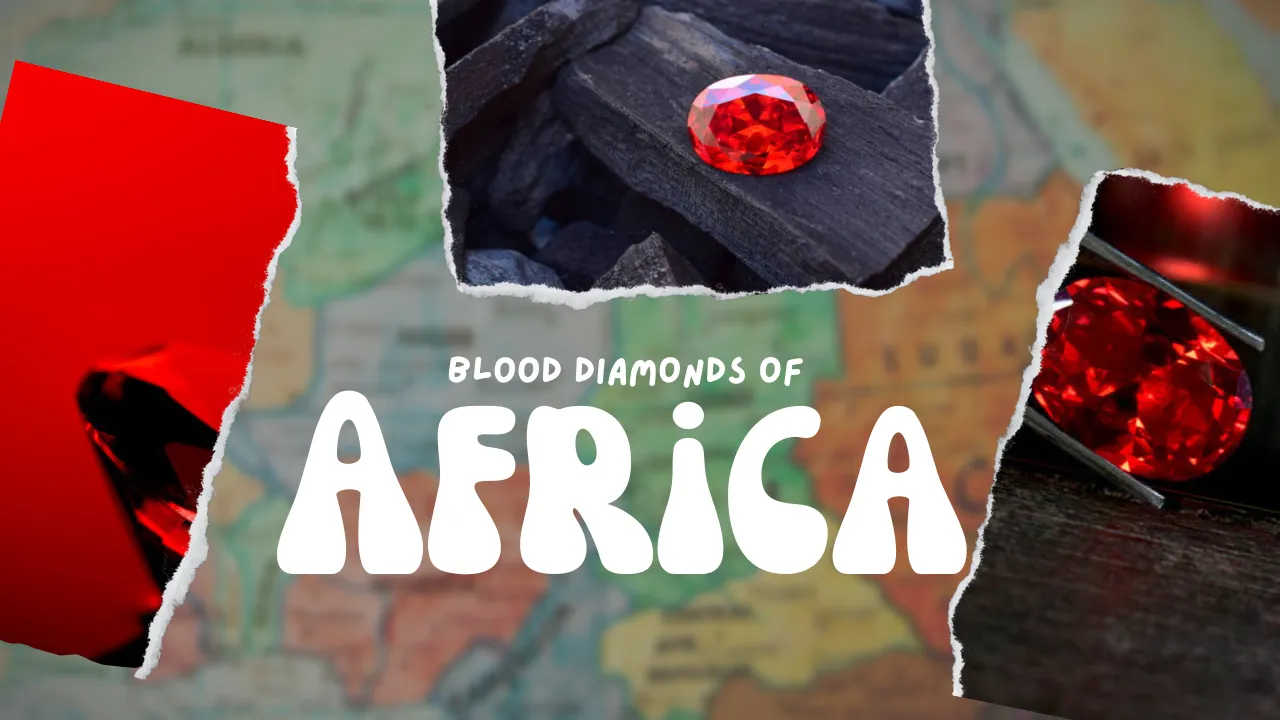
Although many people view diamonds as a symbol of loyalty and love, the truth is that many diamonds are not as pure as they seem. Diamonds that are mined in conflict areas and sold to fund armed conflict against governments are referred to as blood diamonds, also known as conflict diamonds. The phrase was initially used in 1998 to refer to diamonds mined in conflict areas of Sierra Leone and sold to support rebel organizations. The people and ecology of the nations where blood diamonds are mined suffer greatly as a result of the trade in these gems. This essay will look at the war that gave rise to the blood diamond trade, its effects, efforts to halt it, and the part that consumers may play in putting an end to it.
The conflict behind Blood Diamonds
When Sierra Leone was embroiled in a terrible civil conflict in the 1990s, the phrase "blood diamonds" first appeared. Rebel organizations exploited the revenue from the sale of diamonds to fund their conflict with the government, which resulted in numerous breaches of human rights, including the forcible labor and amputation of civilians in diamond mines. Similar wars have occurred in other diamond-rich nations including Angola, the Democratic Republic of the Congo, and Liberia, thus the scenario wasn't unique to Sierra Leone. The ambition to control precious diamond deposits and the potential benefits from their sale are what drive these wars.The impact of Blood Diamonds
The people and environment of the nations where blood diamonds are mined are significantly impacted by the trade in these stones. In addition to the violence and breaches of human rights brought on by the conflicts, diamond mining also has a huge negative impact on the environment. Large-scale mining operations have the potential to cause deforestation, soil erosion, and waterway contamination. In addition to stoking violence and diverting resources away from more productive uses, the sale of blood diamonds harms the economies of the affected nations.Efforts to stop the trade of Blood Diamonds
Despite the efforts of the international community, the issue of the trafficking in blood diamonds remains. In order to trace the origin of diamonds and guarantee that they are conflict-free, the Kimberley Process Certification Scheme was created in 2003. Participating nations must implement a system of checks and certificates to monitor the flow of diamonds from the mine to the consumer. Conflict diamonds still find their way onto the market despite the Kimberley Process' efforts, frequently by exploiting flaws in the certification process.Consumer responsibility in ending Blood Diamonds trade
Consumers may play a significant part in putting a stop to the trade in blood diamonds. Consumers may limit the demand for conflict diamonds and encourage the industry to use better ethical practices by making well-informed purchasing decisions. By selecting vendors that take part in the Kimberley Process or asking for a certificate of origin, customers can take efforts to verify that the diamonds they buy are conflict-free.
The trade of blood diamonds is a complicated problem that has a terrible effect on the populace and environment of countries that are rich in diamonds. The issue still exists despite some success in efforts to curb the trade. By making wise purchase decisions and pressuring the industry to follow more ethical standards, consumers may play a significant part in putting an end to the trade in blood diamonds. The international community must make every effort to stop the trade in blood diamonds and to safeguard the people and environment of the impacted nations.
